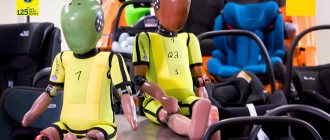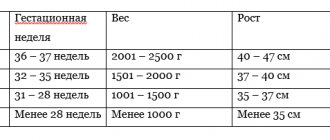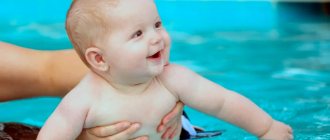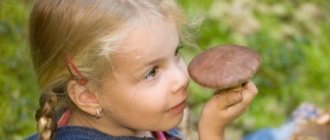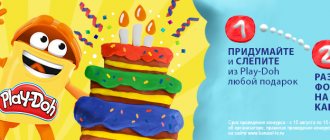Why is early development harmful?
1. Early education can disrupt the course of a child’s natural development in accordance with his individual abilities and the pace established by nature.
2. Some techniques can lead to the development of the habit of passively accepting facts.
3. In the course of work aimed at developing and improving intellectual skills, insufficient attention may be paid to physical, emotional, creative and social development.
4. The use of such approaches is associated with high time, energy and financial costs for parents.
To avoid the harmful effects of the techniques mentioned, it is important to understand that you need to develop only those skills that are age appropriate. Balance is needed. If you act “proactively”, this can lead to the fact that, although some skills will improve, the child’s development will slow down in other areas.
Methodology of M. Montessori
The formation of the technique occurred back in the 20th century, and was named after its creator, Maria Montessori. It is one of the most popular methods among parents and teachers and involves the selection of an individual approach to each child. The main components of the methodology are the child as a central figure, the teacher and the environment for independent learning. An adult in this hierarchy takes the position of an observer and tries not to interfere in the natural process of development of the child, unless he himself asks for help.
The room in which the child is studying is divided into zones to create a developmental environment: sensory, mathematical, speech, practical (for life) and space. The child can navigate these areas independently and use them at his own discretion. Montessori groups are made up of children of different ages, which best affects relationships for children of preschool age from the youngest to older ones.
The main advantages of the technique include:
- the child’s development independently, without adults imposing their ideas;
- the development of a free person who respects the freedom of other people;
- development of sensory skills that directly affect a good level of intellectual development;
- development of self-care and self-discipline skills;
- availability of a variety of Montessori teaching aids.
Despite the significant advantages of the technique, there are significant disadvantages :
- the high cost of benefits (however, there is the possibility of self-production);
- the main focus of the methodology is the development of intelligence, sensory and logical thinking, while no attention is paid to the creative and social development of the child;
- refusal of toys, fairy tales, role-playing games, which, according to the author, are not important for the development of children;
- There may be difficulties for preschoolers during further traditional education at school, where discipline and strict adherence to adult rules are necessary.
What are the benefits of early development?
Many are familiar with the sensational book by the Japanese writer Masaru Ibuki “After Three It’s Too Late.” Developmental psychology has proven the existence of so-called sensitive periods in the formation of a child’s psyche (those when it is especially susceptible to external influences), and the most important of them is the first 3 years.
Early development methods are aimed at not missing the most fertile time for the formation and improvement of the psyche. Of course, for this it is not necessary to use such approaches - it is important, first of all, to know what processes occur in the child’s development and to support them.
By starting to work with the child as early as possible, developing him comprehensively, the parent gets the opportunity to discern the child’s abilities for a particular activity and allow them to reveal themselves.
1. You don’t need to develop only intellect. Training can accompany any activity: walks in nature, cooking, putting the house in order, role-playing games, listening to music, drawing, handicrafts, etc.
2. One of the basic rules of all early development methods is learning through play, in a comfortable emotional atmosphere, without violence. In this case, the adult only accompanies the child, providing him with help and support.
3. Forced development, which runs counter to the child’s psychophysiological readiness to master certain skills, is not the goal of the methods we are discussing, but the fanaticism of parents who misunderstood the concept itself.
4. The global task of early development is to satisfy the child’s natural need to understand the world through meaningful communication with adults who care for him and to get acquainted with the natural, objective, conceptual and social environment.
We will talk about some common early development methods so that you, having seen the main idea contained in each of them, can understand the essence of the discussion and form your own view on the very principle of this pedagogical direction.
What about early athletic development?
It depends what you mean by sports. If you want to raise a strong, confident swimmer, you can begin developing this skill in your child from the cradle, immediately after his umbilical wound has healed. Lessons are held in the bathtub under the constant supervision of parents. It’s even better if you invite an early learning swimming instructor to your first lessons. He will show you how to correctly perform maneuvers on the stomach and back, and teach your baby to dive.
It's never too early to start swimming. In fact, your baby has already mastered this skill perfectly - for the previous nine months he swam in the amniotic fluid in his mother's belly, so now he feels great in warm water. This method of early sports development improves the baby’s innate skills. If you postpone classes until later, the baby will forget his intrauterine experience and will have to be taught again.
The duration of the first swimming lessons should be short - 5-7 minutes. In this case, the bath is filled approximately to the armpits of the baby in an upright position, and the water temperature should be about 37 °C. Over time, the duration of classes increases and the temperature decreases. After a couple of months, the training time can be increased to 20–30 minutes and carried out in cooler water – 33–34 °C. It is important to understand that all these figures are approximate - first of all, parents need to focus on the child’s reaction. If he is cold or tired of swimming, he will let you know.
If you want to raise a soccer star or a future Tour de France champion, you can begin early home development of the baby's relevant skills as soon as you realize that he is able to normally coordinate the movements of his body.
Just don’t think that we encourage you to take your child to a real football field or cycling track! Methods of early sports development at the initial stage are aimed only at instilling in the child the desire for a sports lifestyle. Infant football means a game with a light ball, when dad or mom passes it lightly to the child and tries to get him to meaningfully pass the ball back, and not in a random direction. It’s the same with a bicycle - it’s not a race for speed, stunts and overcoming obstacles, but rather a motivation for the child to pedal a three-wheeled car while walking.
In Scandinavian countries, one of the earliest sporting activities is skating and alpine skiing: it is not uncommon to see a two-year-old skier there. You can begin developing these child skills almost from the cradle, but, of course, in compliance with all safety rules. A child should not be taken to a busy skating rink where there is a risk of collision with other people, and the first experience of skiing should be on a hill with a very small slope - minimally enough for the skis to roll.
After home exercises, you can move on to the next levels - general physical and initial training with a coach in the sports section. General physical training is mainly aimed at the early development of coordination, flexibility, strength, endurance and other universal skills, but contains individual elements specific to this sport. Initial training is already real professional training for young athletes.
Before planning a child's sports career, parents need to find out the minimum age for starting a particular sport. For reference, here are federal standards for some popular disciplines.
- Team sports.
It is recommended to seriously engage in team sports from the age of 8–9 years. However, general physical training can be started earlier: hockey and football - from 5 years old, basketball - from 7 years old, volleyball - from 8 years old.
- Martial arts.
Children are accepted for general physical training in jiu-jitsu, karate, sambo, taekwondo, wushu from the age of 4, and in judo and Kyokushin - from the age of 5. The stage of initial training in martial arts begins at the age of 7, for some disciplines - a little later.
- Cycling.
General physical training in the BMX discipline is allowed from 4 years of age, initial training - from 6 years of age. General training in track racing and mountain biking begins no earlier than 9 years, in road racing - 10 years, and you can move on to the training stage in all these types of cycling no earlier than 10 years.
- Gymnastics and dancing.
General physical training in sports acrobatics, gymnastics, and dance sports is allowed for children from 4 years of age. Girls from the age of 3 can practice rhythmic gymnastics; there are no standards for boys. Children in these disciplines enter the initial training stage at the age of 6–7 years.
- Figure skating.
Boys and girls can engage in general physical training in this sport from the age of 3, the initial stage starts at 6 years.
Basic methods of early development
If we talk about the entire space of methods and materials designed for the early period of development, education and training, then most often the following pop up in the consciousness of the enlightened public:
1. Maria Montessori system;
2. Steiner’s Waldorf pedagogy;
3. Nikitin's intellectual games;
4. Glenn Doman cards;
5. Cecile Lupan method;
6. Zaitsev cubes.
In this article we will cover the first three approaches. Read about others here.
When they talk about early development, they also mention:
• foreign language from birth;
• method of nurturing talents of Shinichi Suzuki;
• parental experience of Lena Danilova, a mother of many children;
• Masaru Ibuku and his book “After Three It’s Too Late”;
• encyclopedias by William and Martha Sears “Your Baby from Birth to 2 Years” and “Raising a Child from Birth to 10 Years”;
• “Parenting Without Coercion” by Thomas Phelan and “How to Raise a Happy Child” by Jean Ledloff;
• Cuisenaire rods;
• Dienesh logical blocks;
• educational games by Voskobovich;
• learning to read according to Pavel Tyulenev;
• and many, many other excellent books and manuals that do not always pretend to be a systematic approach, but provide useful tips for specific life, educational and educational situations. Once upon a time there was Dr. Benjamin Spock. But we won’t mention him anymore, because it has been scientifically proven that his parenting methods harm children.
As you can see, it is not difficult to get confused in this mixture of approaches, manuals and concepts. Let's find out! We will focus on the most important systems and methods that have changed the landscape of pedagogy for the development and education of children over the past hundred years.
Masaru Ibuka technique
The technique, developed by a Japanese engineer, author of the book of the same name “After Three It’s Too Late,” is based on the principle that it is important to start working on the development and upbringing of a child early, from the first days of his life. Educating a child involves the full development of the child by the parents themselves, who by their example shape the child’s personality. To do this, it is necessary to learn poetry, pay attention to teaching foreign languages, musical and physical development.
Advantages of the technique:
- “unstamped” and unlimited methods of child development, since the parent himself chooses activities in accordance with the individuality of his child;
- development of self-service skills and teaching order.
Flaws:
- lack of a manual that would clearly outline the work in accordance with the methodology;
- There may be a difference of opinion due to different mentalities, since stricter views on raising children prevail in Japan.
Maria Montessori system
Perhaps the name with which the concept of early development is primarily associated is Maria Montessori. Her methodology, based on the principle of “help me do it myself,” awakens in children a natural desire to satisfy natural cognitive interest through action and manipulation of environmental objects in an atmosphere of free choice and self-determination.
• Maria Montessori - scientist, children's doctor, teacher and humanist thinker of the 20th century of Italian origin. Having started her teaching career by working with children with disabilities and receiving phenomenal results (her students learned to read, count and write before their peers without cognitive impairment), Maria Montessori decided to introduce her achievements into general pedagogical practice.
• Maria Montessori's educational system soon gained worldwide recognition and has been widely used by teachers and parents for more than a hundred years. The principles of this concept underlie the pedagogical activities of children's institutions - kindergartens, schools, educational centers - around the world, including in our country.
• Maria Montessori's method is based on understanding the nature of the child as an inquisitive researcher, who has his own individual characteristics regarding the subject of interest and the pace of knowledge of the surrounding reality, who makes free choice and bears personal responsibility for his words and actions.
• The child, mastering the subject environment around him, acquires skills of social interaction, self-service, maintaining order and cleanliness, masters specific types of activities (cooking, ironing, washing), develops qualities such as patience, perseverance, gains basic understanding of the place and functions of objects in everyday life, learns to compare them according to various parameters, trains memory, attention, fine motor skills, and speech.
The object of the child’s research becomes the subject environment in which he exists, which does not provide quick and unambiguous answers to his cognitive interest. The surrounding reality, rich in stimuli, not only initiates curiosity in itself, but also constantly feeds it. This is facilitated by special working material and teaching aids, which provide multiple options for interacting with them.
Montessori materials serve as teaching aids and tools:
• sets of cubes, cylinders and other three-dimensional geometric shapes;
• labyrinths;
• frame inserts;
• lacing;
• sets for finger games and creative activities.
Everything is made from environmentally friendly materials, if possible from wood. They are designed in such a way that mistakes when manipulating objects are immediately visible to the child. Self-control is one of the most important developmental elements of the system.
Any available means can become Montessori materials: jars with lids, boxes, fasteners, clothespins, natural materials (cones, pebbles, sand), unbreakable dishes, household items, foods (cereals, pasta, beans).
On what principles is work with a child and the child himself based - in a Montessori environment?
Introducing classes using the Montessori method in the children's club
By the age of three, many mothers leave maternity leave, but even earlier the family has a desire to diversify the baby’s daily routine and find him a company of peers.
We recommend starting your acquaintance with children's clubs with the “Together with Mom” groups for the little ones.
The advantage of Montessori groups is that all the principles of child care described above are preserved in a child care institution: educators respect children, provide them with freedom to choose activities and in every possible way encourage the expression of independence in simple everyday tasks.
The Montessori club space is organized specifically for children from 0 to 3 years old: all accessories are selected for children’s height, every corner is safe for independent exploration, age-appropriate materials are always available, which necessarily carry not only an entertaining, but also an educational function. Several teachers who have undergone special training in Montessori pedagogy work with the children.
In addition to free independent work with materials, the Montessori group program for children under 3 years old also includes exercises for speech development (songs, rhymes, theatrical performances, reading aloud), finger gymnastics, group games to broaden their horizons, drawing, music, play gymnastics.
Children really like these types of activities, where the direction of activities constantly alternates, so over time, the kids are left without their parents without problems and tears for several hours in a row, which will definitely save the family’s nerve cells in the first days of visiting kindergarten.
What is a Montessori environment
What to do if you do not have the opportunity to send your child to a Montessori kindergarten? Organizing a full-fledged Montessori environment at home is not easy, but even more important than the availability of special aids is the presence of a trained adult.
The main thing is that when organizing classes in a Montessori environment, the child has the opportunity to independently choose an area of interest, the aids with which he will work, and the time when it is convenient for him to do this (of course, not instead of daytime sleep, if there is a need for it).
The space in which the Montessori environment is organized is classically divided into zones.
• Practical life area: here the child develops skills to serve himself and others (washes, washes, cleans, irons, cooks). The house in this area may contain a children's kitchen with dishes, children's household appliances, furniture and clothes for dolls, themed sets (tools, a doctor's suitcase), fasteners, lacing.
• Language development area where children learn to read and write. Place here manuals for teaching these skills, books, audio CDs, lotto, mosaics, puzzles, a magnetic board with letters.
• Zone of sensory development: here the child, with the help of working material, learns to develop tactile sensations and enrich his sensory experience - vision, hearing, smell. Consequently, in this zone you can place musical toys, construction sets, cubes, pyramids, frames, sorters, construction sets, containers and pads with various fillings, rustling books, puzzles.
• Zone of natural science development: instruments for experiments and manuals for mastering basic knowledge in the field of anatomy (3D models of the body of animals, humans), biology (microscope), physics, geography (globe), chemistry, astronomy (sky map, telescope), thematic lotto.
• Mathematical development zone: toys that allow the child to master the concept of shape, size and quantity (cubes, construction blocks, counting aids, counting sticks, posters with numbers, puzzles, lotto, puzzles, magnetic board with numbers).
In addition to those designed by Maria Montessori herself, you can organize other themed areas in your space.
• Creative development area: paints, pencils, crayons, plasticine, colored paper, glue, scissors, brushes, album, modeling materials.
• Physical development zone, where the child trains gross motor skills, learns dexterity, coordination and balance. Install a sports complex or place separate sports and entertainment equipment (slides, tunnels, wall bars, balls, skittles, hoop, trampoline).
The reason why these zones were not included by Maria Montessori in her system is simple: the founder of the method considered creative and physical activities to be useless for intellectual development. Let's not forget that Maria Montessori developed the foundations of her pedagogical concept based on the desire to meet the learning and development needs of mentally retarded children, which they were deprived of at the beginning of the 20th century. Therefore, at that time there was no emphasis on training gross motor skills and the formation of creativity in the methodology. In modern children's institutions working according to the Montessori system, however, there is always a sports corner and an area for creativity.
1. The number, thematic focus and content of zones depend solely on your imagination, room area and financial resources. For toys and aids, there is only one requirement: the item must provide a choice of ways to manipulate it and be freely available. For example, cubes can be used in construction, in teaching reading and counting (if they have letters and numbers on them), in developing ideas about color, shape, size and quantity, etc.
2. Toys with zero cognitive potential (a gun, a music panel with preset melodies, and others like them) have no place in a Montessori environment. Each parent, of course, decides for himself whether such entertainment items are necessary for his child, but not within the framework of this system.
3. And of course, it is important that all manuals and work material are located on open shelves (in cabinets, racks, chests of drawers) at a height no higher than the child’s eye level.
4. As we can see, the Montessori system has sound principles and rules that can be implemented at home in games with objects (not only Montessori materials), as well as in communication between children and adults. Respect for another, his rights, freedoms, his ways and methods of interaction with the environment, the results of his work - such social skills will serve the child well when he grows up and faces serious intellectual, social and professional challenges.
However, it must be borne in mind that the technique has its limitations. In addition to the square meters and finances that go into organizing a Montessori environment, we should not forget about the psychological aspect.
If we talk about preschool institutions, not every temperament is suitable for placing a child in a kindergarten that works according to the classical principles of the Maria Montessori system. Thus, noisy, active children will find it difficult to follow some rules and disciplinary procedures, and withdrawn children may withdraw even more into themselves.
Well, at home - no restrictions! Only your free time, will, reasonable patience and willingness not to interfere in the child’s process of learning about the world.
Waldorf pedagogy
Rudolf Steiner, the founder of the Waldorf education system, opened a school in Germany at the beginning of the 20th century for the young children of workers at the Waldorf-Astoria tobacco factory. Steiner saw the main goal of his school as the harmonious and non-violent creative development of the individual based on knowledge about the world around him, teaching practical skills and aesthetic education. Steiner's pedagogical system is based on the concept of anthroposophy, but in modern reality it looks like a set of traditions and a special homely atmosphere of the institution.
• The task of an adult in Steiner’s pedagogical system is to help the child reveal the unlimited creative potential inherent in him, and not to introduce into the consciousness of the pupil a finite set of knowledge and competencies, preparing him for adult life. On the contrary, the child is given the opportunity to remain a child for as long as possible, enjoying the joys of childhood. Childhood is a unique time in the cycle of life, which has its own characteristics, values and tasks. To skip this period, filling it with attempts to meet the demands of society, means betraying the very idea of childhood.
• Therefore, in children's institutions of the Waldorf system, the child is placed in the center of attention, he is the main value, grows and is brought up in an atmosphere of ease, free choice of activity at a pace characteristic of his temperament and personality type. The child’s only task is to develop his own world, to open up and realize himself through leading activities characteristic of a particular age. And for the entire preschool period it is a game - first subject-based, later role-playing.
• It would not be an exaggeration to immediately say that Waldorf pedagogy denies intensive development in infancy, opposing the early intellectualization of children, since, according to Steiner and his followers, it interferes with the free formation of the emotional and spiritual components of the child’s personality.
Why did we decide to talk about Waldorf pedagogy?
Indeed, in school institutions of the Waldorf system, children’s intellectual development (including learning to read, count, and write) is not taught until the age of 7–12, so that the mastery of abstract disciplines does not precede the establishment of the child’s emotional and spiritual world.
1. Education lasts 11 years, the entire secondary school (8 years) is taught by one teacher. Preference is given to disciplines of the aesthetic cycle (music, art, eurythmy) and practical skills (gardening, handicrafts). From the first grade, two languages are taught.
2. The study of the material (and not disciplines, as in a traditional school) is divided into blocks that last on average about a month, with complete immersion in the topic, considered on the principle of interdisciplinarity in order to form a holistic view of the child on the world.
3. The presentation of the material is structured in such a way as to help the child not only perceive it, but also experience it and, based on sensory experience, put forward theories, draw conclusions, and form a belief system. As an example, in elementary grades the multiplication table can be learned through music, rhythmic clapping or stamping feet, and the basics of physics and engineering in older grades can be taught through a project to build a model bridge.
4. Schools hold a large number of holidays, accompanied by theatrical performances, for which children thoroughly prepare: they rehearse, sew costumes, make dolls and gifts for parents.
5. There are no manuals, as well as assessments, tests and exams, and with them, competition in learning. Management of both the educational process and the institution itself is carried out by the school council, consisting of teachers, parents and an administrator responsible for the economic part. The institution does not have a director.
We won’t delve further into the specifics of school Waldorf pedagogy; you’ve already got the general idea; let’s stay within the framework of our age. What does the Steiner system offer to the youngest children? On what principles is the educational process based?
What is a Waldorf kindergarten
Children start Waldorf kindergarten at age 3 and move on to school at age 7. It is believed that by the age of 3, a child masters upright walking and speech, for which he needs a home environment. After the appearance and consolidation of his “I” in the child’s personality and his mastering the basics of role-playing games, he is ready for kindergarten.
• In Waldorf kindergarten there are no classes to master basic knowledge of the native language, basic mathematics and writing. Most of the day is devoted to so-called free activities: children, coming to the kindergarten in the morning, choose what they will do, all work materials are always freely available.
• Handicrafts, fine and applied arts, singing, eurythmy (special dance movements to music or reading poetry), theatrical performances in the spirit of folk traditions - an incomplete list of activities that we would call general developmental, bearing in mind that there are also narrowly disciplinary ones (start counting , basics of the native language). But there are no such people here. Only creativity, creativity and creativity. It is not customary to take children to additional classes outside the walls of a Waldorf kindergarten: this goes against the very ideology of Steiner pedagogy, which has a fair number of restrictions.
• Groups are of different ages, the younger ones learn from the older ones and from the teacher, who plays the role of a mother rather than a teacher: cooks, cleans, mends children's clothes, sews toys, knits.
• An adult does not sit idle, he is always busy with something - this serves as an example for children who grow up with a clear understanding that man is created for creativity in any of its manifestations. From time to time, the teacher joins the children’s games, reads fairy tales to them, often with musical accompaniment: he himself or any child who has shown interest in this is at the instrument.
Classic toys: dolls, cars, construction sets and everything else that fills the shelves of modern children's stores are absent here. Instead use:
1. homemade dolls,
2. crafts made of clay and wood,
3. scraps of fabric,
4. knitted napkins,
5. sewn blankets.
There is another wonderful rule that allows you to save the family budget, which must be followed by parents of children attending a Waldorf kindergarten: there should be no store-bought toys at home.
There are also a lot of natural materials here: stones, cones, acorns, driftwood - everything that is found during a walk and enchants children with its natural beauty, awakens imagination and encourages creativity. And walks in the fresh air in any weather with outdoor games and role-playing games are given obvious preference here. There is no television or tape recorder in the Waldorf kindergarten.
• Environmental education is one of the most important features of this system, so children take care of the garden, plant trees, grow cereals, herbs and vegetables, and make bird feeders.
• Manual labor is not only a tool for developing fine motor skills and mastering useful skills, but also a philosophy of life, therefore, in addition to gardening, all children learn to carve wood, sew, knit, embroider, sculpt, work on a pottery wheel and a loom - all this already as part of the school curriculum.
• Children also participate in household life - in preparing food, cleaning the premises, putting things in order after playing and eating together. All this is more like the life of a large and close-knit family than a kindergarten group.
So, if we bring everything stated together, what are the principles of Waldorf pedagogy?
The main thing to remember about the first three years of life
- From birth to the age of three years, the child’s brain is tuned to absorb information coming from all analyzers: hearing, smell, taste, vision and touch develop primarily at this age
- According to experts in the Montessori Method, it is in the period up to three years that the very first impression of this world is formed: how safe, interesting, friendly it is, and so on. A person carries these attitudes with him until the end of his life,
- Children can only learn through direct experience and repetition of practical actions. Children from 1 to 3 years old are able to absorb many times more information than adults, provided that this information is related to the environment in which they find themselves and children have the opportunity to actively explore.
Basic principles of Waldorf pedagogy
• Discovering abilities in a favorable atmosphere and in those activities that at this stage of his individual development the child is able to master without internal resistance and tension.
• Individual approach to the child based on the principle of equal opportunities: all children have the same chances to realize their creative potential, regardless of their level of intelligence, age, gender, nationality or membership in a particular social group.
• Maximum support for any initiatives coming from children and a minimum number of prohibitions, unless they are associated with a threat to the life, health and well-being of the child himself and other members of the community, as well as with the integrity of the environment, be it a garden or the area around it (draw maybe in an album - why do it on the wall?).
• Self-learning through imitation: by observing an adult or older group mate, interacting with them, the child receives an example and food for independent mastery of objects and concepts of the world around him.
• The space and daily routine of the kindergarten are organized in such a way as to support the development of free play and free choice of activity: the child independently determines the degree of his involvement in joint activities and games with other children.
• Game activities (role-playing games, acting out scenes from myths and fairy tales, performances, songs, dances, nursery rhymes, jokes, theatrical performances, concerts) - all within the framework of national culture and in the spirit of respect for folk traditions. It is against this background that the child’s creative and aesthetic development takes place, which is the basis of the entire pedagogical model.
• Labor education through various crafts: sewing, embroidery, modeling, drawing, wood carving, design, making dolls for performances.
• Environmental education. The goal is not only to take care of the garden as part of the overall ecosystem, but also to form ideas about the life cycles of nature and living creatures inhabiting the planet. Thanks to observations of environmental phenomena and feasible participation in maintaining balance in the nearest microecosystem, the child independently gains invaluable experience of experiencing unity with nature and finds his place in the world as a person, and not as a social unit.
So, we got to know Waldorf pedagogy better. Considering that this system rejects early development, it cannot offer any specific educational methods for independent use at home.
But the very approach that underlies it can be adopted by a modern parent who maintains a calm and balanced approach to life.
The general approach to education and some principles of Steiner pedagogy will undoubtedly find their admirers. Respect for a person’s personality from the moment of birth, an atmosphere of ease, giving the child the opportunity to develop at his own individual pace and within the framework of independently determined interests, a creative approach to life in all its manifestations, reverence for folk traditions and crafts, early introduction to creative and socially useful work - not enough Which parent will speak out against these theses. The main thing is to apply them correctly in practice, non-violently and with love.
Nikitin's technique
The large family of Boris and Lena Nikitin and their education system were the center of attention in the 70s and 80s of the 20th century. It was within the framework of the family that Nikitin pedagogy developed as a system of education and intellectual development of the child. Although, according to the recollections of the Nikitin children, no system existed - there was only a small set of principles based on common sense, the experience of generations and pedagogical practice.
Boris Nikitin at one time was keen on the ideas of Maria Montessori and Makarenko and dreamed of opening a “labor school”, where immediately after meeting he invited Lena, his future wife. The school was never opened for a number of reasons, including ideological ones.
What attracted the attention of this family?
Early development according to Glen Doman
Glen Doman is a military doctor. At one time, he worked with children who had suffered a brain injury or suffered from central nervous system lesions. He came up with a system based on black and white cards, with the help of which he taught his students. After the technique gave a positive result, he decided to try it on healthy babies.
Today, cards are used to start the development of a child up to one year old. They offer work in three areas: reading, arithmetic and intellectual development. The cards have different images on them. For reading material - whole words, for arithmetic - red dots, for general development - animals, plants, people.
The task of the teacher or parent is to show the drawings to the child for a few seconds throughout the day. Gradually he will learn to remember the images, and when you see that he has memorized all the cards, you can add new ones. This simple exercise helps to memorize images and train the child’s brain activity. Thanks to the method, children learn to read and write earlier. They master encyclopedic knowledge faster at older ages.
To teach a child arithmetic, white cards with chaotically drawn dots are used. Gradually the number of points increases to 100. When counting to one hundred is clear, you can move on to solving examples and studying numbers. The system gives the first, impressive results within just a few months. It allows you to master not only mathematics, but also develop memory and attention.
Positive aspects of early development according to Doman:
- The ability to memorize large amounts of information develops;
- Visual memory is trained;
- The technique does not require much time. You can work with your child for a few minutes throughout the day.
According to the scientist, children are very inquisitive and effort must be made to discourage them from learning. They absorb knowledge like a sponge. By offering the technique to a child aged 3-6 months, you will fill his “information hunger”. However, each exercise should last exactly until the child gets tired. It is impossible for classes to cause him boredom.
Ready-made cards are sold in children's stores and on Internet sites. You can download and print them yourself, or buy ready-made ones. You can practice according to G. Doman’s system from the birth of your child. The optimal age is 6 months.
The Nikitins' innovative approach
For example, something that is rarely talked about now: Boris Nikitin was the first in our country to talk about the need for close and long-term physical contact between mother and child; he liked how African women do not part with their children, carrying them in slings.
• He also insisted on the need for the newborn to be placed on the mother's breast immediately after birth. Let us remind you: we are talking about the 60s of the last century! In maternity hospitals in our country, this practice is still difficult to take root, and mothers have to negotiate separately with the obstetric team in order to give themselves and the child the opportunity to reunite in the first minute after the birth of the baby.
• It is believed that it was Nikitin who first managed to draw the attention of the general parental community to issues of early child development.
• However, the Nikitins themselves always said that they never set themselves the goal of teaching the children everything they could as early as possible. They just wanted to give children the opportunity to develop their innate abilities and express themselves and reveal themselves to the fullest.
• Thanks to the Nikitins, for the first time in our country, where there was a state educational doctrine, the idea of parental responsibility for raising their own children was voiced.
• Moreover, in addition to responsibility to their children, parents also have freedom of choice: they have the right to decide how and in what way to raise their child. More than a decade has passed since then, and issues of freedom to choose the educational system continue to be discussed in parental and pedagogical communities.
What else innovative did Nikitin offer? He urged parents, from the moment the baby is ready to crawl, to arrange the house in accordance with the child’s natural need to master space, in which he should not have any restrictions (except for situations that threaten life and health).
1. In addition to the space itself, the child should have free access not only to toys and children's aids, but also household utensils: only in this way can he get accustomed to the everyday environment and learn to operate its objects, getting used to work not as a duty, but as a natural way of interacting with the world around us.
2. The Nikitins placed special emphasis in raising children on the physical and intellectual aspects of development. Soon after the birth of their first child (and they had seven children in total), sports equipment, geographical maps on the walls, cubes, and work tools began to appear in the house - all freely available. The Nikitins became the popularizers of sports complexes, which are now probably in almost every home and kindergarten.
3. The hardening system that the Nikitins practiced in their family is also known. Although it was quite simple: pouring water and maintaining natural conditions for the growth and development of children. The large family lived quite modestly, so it turned out that everyone walked barefoot and lightly dressed at home, the children were not bundled up for walks on the street, and in any weather.
4. In children's classes, Nikitin preached the idea of non-violence and the absence of strict regulation. The child needs to create a rich environment that advances his development with a large number of aids and tools for work, including real, adult ones.
5. The Nikitins’ special merit lies in the field of intellectual development of preschoolers. The logic games created by Boris Pavlovich: “Unicube”, “Fold the Pattern” and “Fold the Square” - remain unsurpassed in their didactic richness and are recognized as the best in their niche by the third generation of parents.
6. In designing his intellectual games, Nikitin was guided by the basic principle of learning - from simple to complex. In his manuals, logical tasks for children evolve from game to game, and within the same puzzle, from the simplest for one-year-old children to the most complex, which not every adult can cope with. Moreover, the task can be posed in different ways - in the form of a drawing, drawing or verbal task, this is how different channels of perception are trained.
7. By incorporating variability in the final solution into his puzzles (there can be more than one way to complete a task), Nikitin provides the child with freedom of creative self-expression and maintains in him an unflagging interest in the work material and in the process of cognition itself as a whole.
The development of spatial thinking, memory, attention, imagination, analysis skills, the ability to compare phenomena, classify them, self-control, patience and perseverance, finally - this is the educational potential that is inherent in Nikitin’s puzzles.
You couldn’t help but notice that the Nikitins left aside the artistic and aesthetic side of the creative development of a child’s personality. Yes, and for this (and not only for this) they were criticized by opponents and skeptics.
But this does not diminish the significance of what has been done, but once again suggests that each system has something that can be borrowed for independent studies with children, enriched with developments from other methods.
What principles did Nikitin’s pedagogy of development stand on as a whole?
Myths about the early development of babies under one year old
- It is difficult to convey any information to children under one year old, so some classes and methods are simply pointless.
- This is completely wrong! Yes, children in the first year of life are more based on feelings rather than on reason, but they can be taught many things. Classes will greatly contribute to psychomotor development, which, in turn, will have a great impact on the child’s physical and intellectual skills.
- Early development is dangerous for children under the age of one and a half to two years.
- This again is not entirely true. Any danger may be associated with the fanatical desire of the mother to develop her child by any means and give him encyclopedic knowledge. Overloads can indeed be dangerous for the baby. But if the activities are not forced on the child and do not take a lot of time, then they will not bring anything but benefit.
- Early development is very difficult.
There is nothing complicated! You just need to play with children, like mothers do every day. Only games and activities should be chosen so that they not only allow you to have fun, but also teach the baby something, and also develop his psyche, motor skills, sensory skills, and allow him to explore the world around him.


